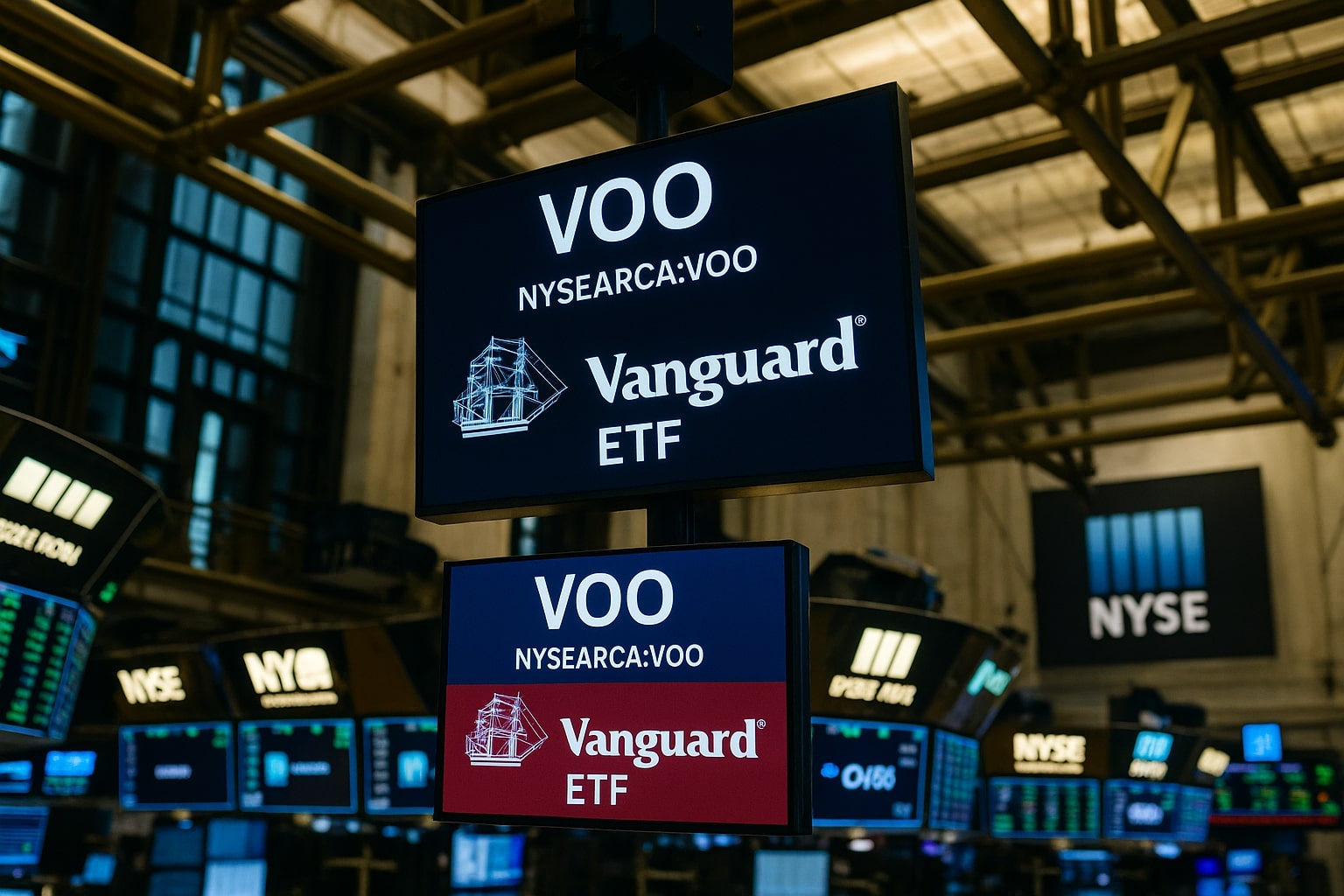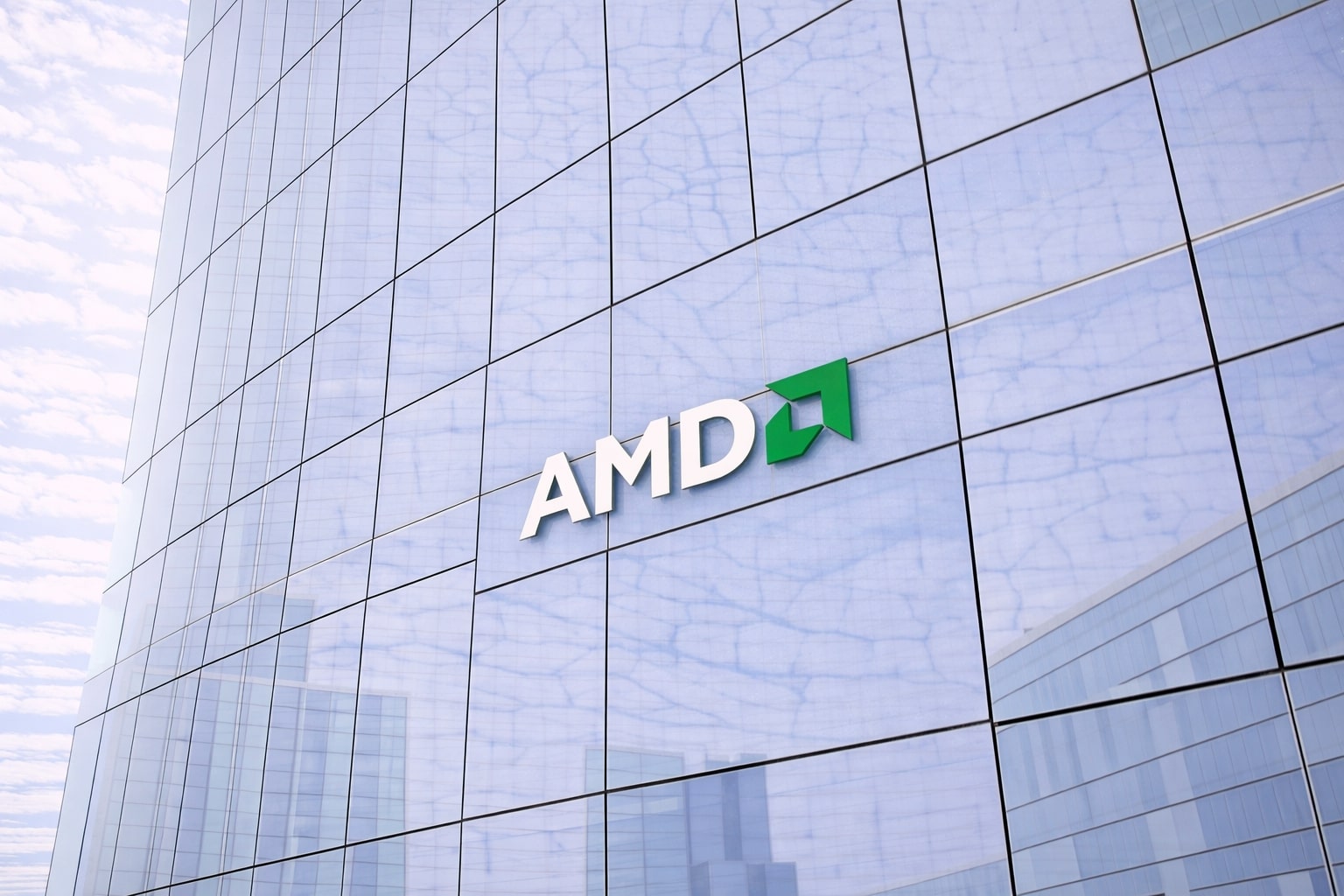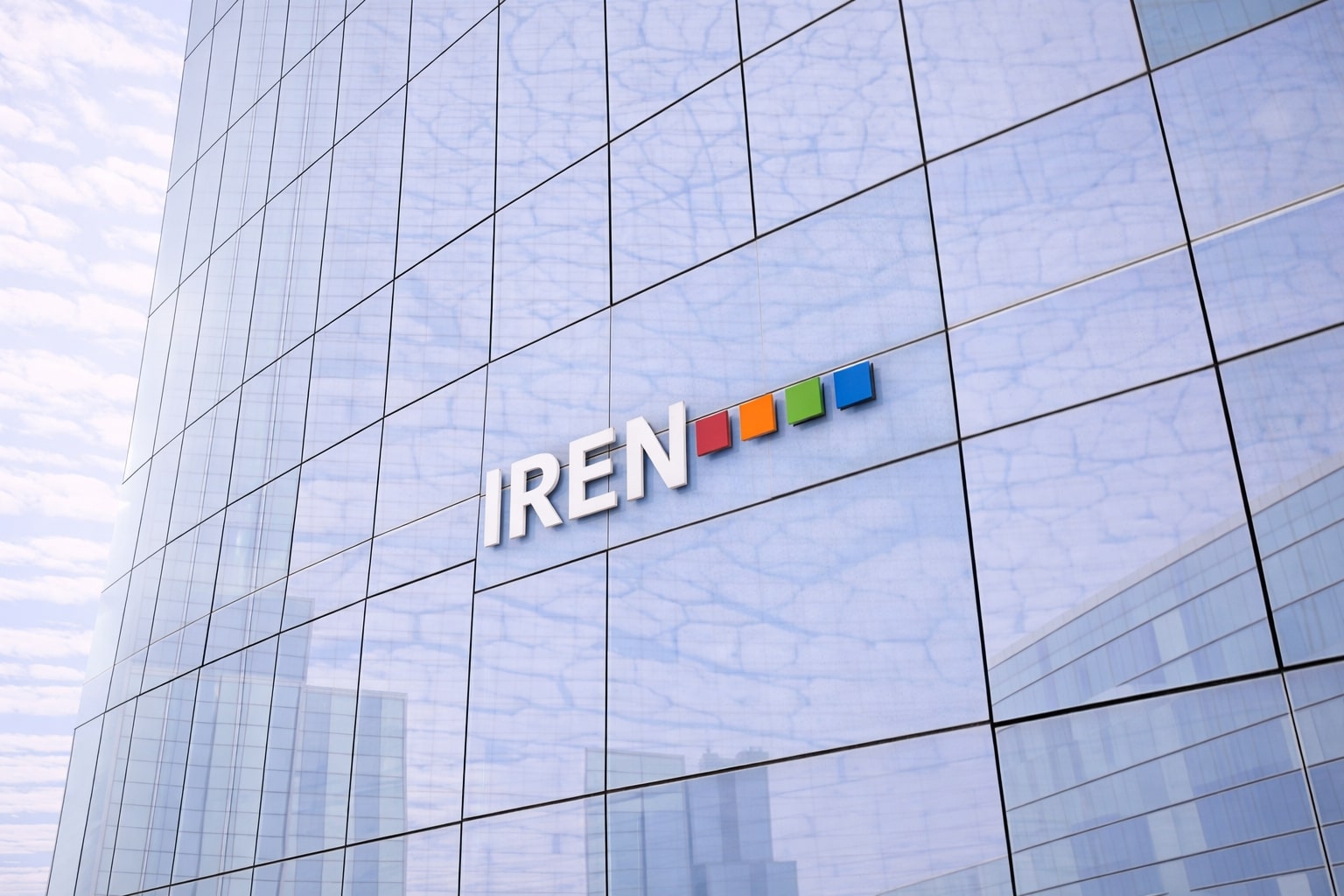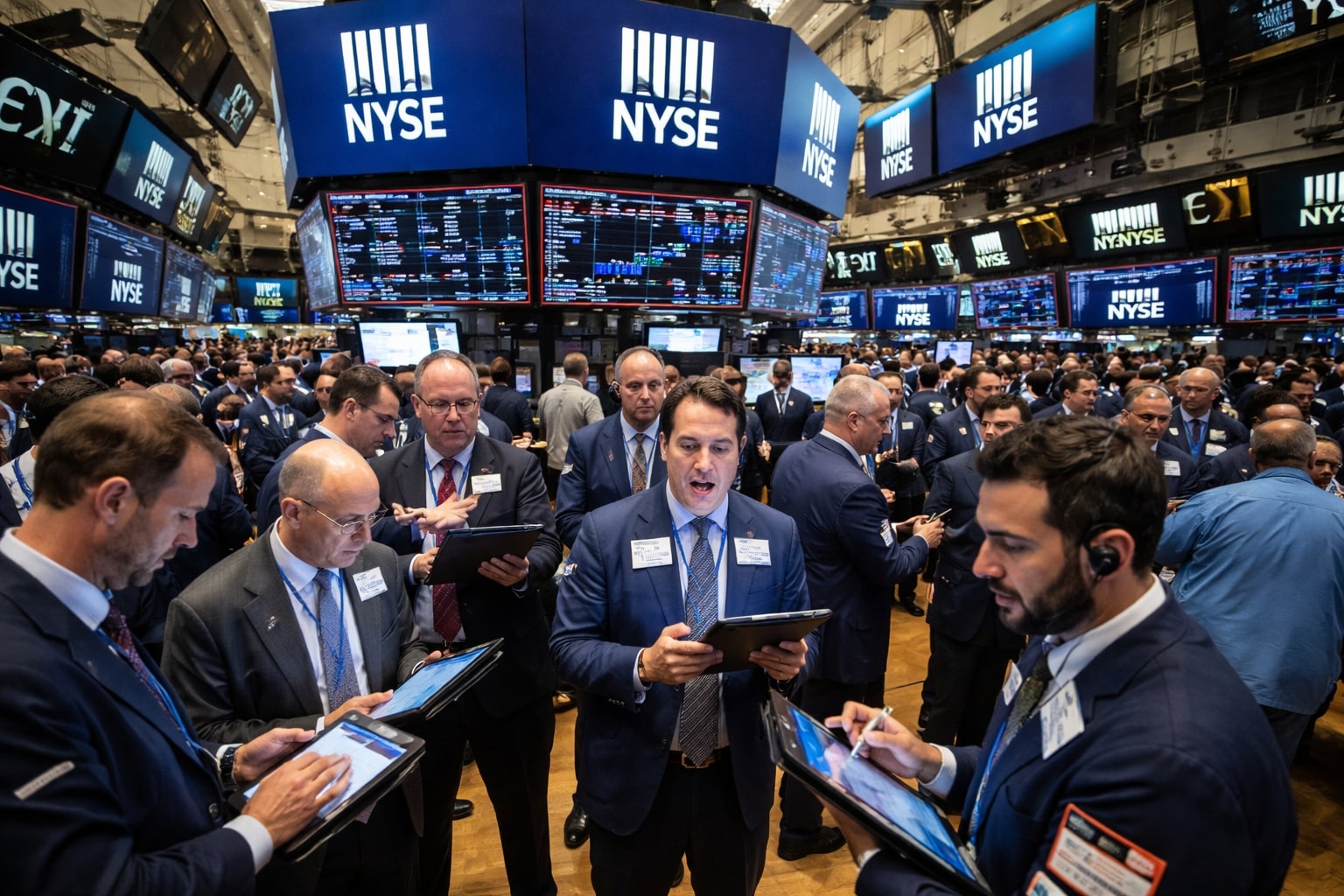
NYSEARCA:VOO ETF Defies Tariff Chaos With Liquidity Backing and Earnings Strength
VOO ETF remains firm above $510 despite inflation and policy risks, supported by bank cash, earnings growth, and S&P 500 strength | That's TradingNEWS
NYSEARCA:VOO Tracks Higher Despite Tariff Pressure, Liquidity Surge Keeps Bulls Engaged
The NYSEARCA:VOO ETF has powered through waves of macro turbulence, with the S&P 500 reaching new highs even as tariff threats loom over U.S. trade partners. The ETF now trades just above $510, near record levels, buoyed by resilient earnings growth and surging corporate liquidity. Despite renewed fears of inflation sparked by the June CPI print, institutions are still rotating into VOO, treating it as a core equity anchor in portfolios built to weather policy shock.
Tariffs, once dismissed as temporary bargaining chips, have now become permanent risk pricing mechanisms, especially after the Trump administration’s August 1 ultimatum on expanded levies. And yet, VOO has held firm, supported by both bottom-up corporate earnings resilience and top-down macro flows. The reason? A mix of fiscal support, strong bank liquidity, and sticky tech leadership.
S&P 500 Earnings Support VOO’s Rally Into Q3
At the sector level, tech, communications, and AI names are delivering the heavy lifting, driving the index-level earnings growth needed to justify VOO’s elevated valuation. S&P 500 Q2 earnings are tracking at +4.8% YoY, with full-season projections rising toward +9%. This performance is critical to defending VOO’s current 23x forward earnings multiple, which, while rich, is still underpinned by margin resilience and productivity gains.
Looking forward, consensus estimates for Y+1 earnings sit at 20.45, with Y+2 projected at 18.67. These estimates help validate continued allocation to NYSEARCA:VOO, especially among institutions seeking S&P 500 exposure with liquidity and tax efficiency.
This earnings base is also why recent CPI volatility hasn’t knocked the fund off course. Despite the June CPI climbing +0.29% MoM and hitting +2.97% YoY, investors are not dumping large-cap U.S. equities—they’re rotating within them, leaning more into cash-flowing mega-caps.
Banks Flush With Cash Fuel Broader Lending Surge, Supporting VOO Constituents
While tariffs and inflation dominate headlines, liquidity remains the unseen engine behind VOO’s strength. U.S. commercial banks now hold over $3.6 trillion in cash, a staggering increase compared to sub-$400 billion levels in the 2010s. This capital base is being deployed into commercial and industrial lending, especially among smaller regional banks reacting to tariff-driven uncertainty in supply chains.
This surge in lending—despite higher rates—has acted as a shock absorber. Large-cap companies inside VOO benefit directly from easier credit terms and elevated consumer confidence. While inflation pressures persist, the lending environment remains accommodative enough to allow companies to pass on cost increases without sacrificing volume.
At the same time, large trading desks at firms like JPMorgan and Goldman Sachs are profiting from volatility, further propping up financial sector performance inside VOO.
Tariffs Add Risk, But Also Fiscal Fuel: VOO Reacts Rationally
The Trump administration’s renewed tariff threats—targeting the EU at 30%, Canada at 35%, and as much as 40% for Asian exporters—introduce volatility, but they’ve also boosted fiscal revenues. Tariff income has surged to $27 billion in June alone, pushing 2025 year-to-date totals above $100 billion. This has contributed to the first U.S. fiscal surplus since 2017.
That revenue—representing 4.9% of total federal tax receipts—acts as a counter-cyclical stabilizer. In other words, it gives the government more room to avoid aggressive spending cuts, which supports economic momentum and indirectly benefits companies in VOO, especially those tied to domestic consumption.
While tariff-driven CPI acceleration is real (the Core CPI is now at 2.9%, just under forecasts), the inflation risk appears manageable—at least for now. Investors are pricing in just one Fed rate cut by December, contrary to market hopes for two. The Fed's wait-and-see posture supports equities, since a hawkish reversal is unlikely without a major labor market breakdown.
Fed Caution Creates Stable Backdrop for VOO Allocation
Labor data remains firm, with 147,000 jobs added in June, unemployment ticking down to 4.1%, and wage growth holding at +3.9% YoY. This prevents the Fed from acting prematurely. For VOO holders, this is the best-case macro scenario: strong employment, stable inflation expectations, and a patient Fed. It supports earnings visibility and multiple expansion.
Moreover, with more than $7 trillion in sidelined capital parked in money market funds, there’s a cash buffer capable of extending this rally. The question is not whether equities like VOO are expensive—it’s whether they’re expensive relative to still-subpar bond yields and global macro risks. And on that front, equities win.
Inflation Rebounds, But Market Still Prefers VOO’s Structure
June’s CPI spike led many to believe rate cuts were off the table, and yet VOO barely flinched. Why? Because fund flows favor structurally sound, index-based vehicles. Core CPI rose only +0.2% MoM, and the spike in headline inflation was driven primarily by energy and utilities. Shelter inflation is decelerating. Clothing, furniture, and autos are disinflationary. In this environment, VOO acts like a balance sheet proxy—trading on capital stability rather than short-term price noise.
The TACO trade—tariffs, automation, credit rotation, and onshoring—continues to work in VOO’s favor. Energy prices rising alongside fiscal easing is a net positive for the industrial and materials sub-sectors, both of which are well-represented in VOO’s holdings. Tech, meanwhile, continues to lead due to AI capital expenditures, with semis and hyperscaler names anchoring forward earnings.
Strategic Rating: NYSEARCA:VOO Remains a Buy Into Q3
The data remains firm across the board. Q2 earnings growing +4.8%, Y+1 S&P forward P/E at 20.45, a strong labor market, manageable inflation, and $3.6T in bank cash create a uniquely stable macro landscape for large-cap ETFs. Even with tariffs escalating and CPI rebounding, the structure of VOO makes it a preferred vehicle for long-only allocators, sovereigns, and pensions.
Valuations are high, but they're supported. Volatility is back, but it's being monetized. Capital is on the sidelines, but it's trickling back in through passive structures.
Unless inflation spikes above 3.5%, or job creation collapses below 100K per month, VOO is a buy. And for those seeking an entry, pullbacks toward the $495–$500 zone would present compelling reloading points.
That's TradingNEWS
Read More
-
AMD Stock Price Forecast - AMD at $223: AI GPU Ramp, CES 2026 Catalysts and the Next Move for NASDAQ:AMD
03.01.2026 · TradingNEWS ArchiveStocks
-
XRP Price Forecast - XRP-USD Near $2 as Whales Add $3.6B and ETF Inflows Top $1.18B
03.01.2026 · TradingNEWS ArchiveCrypto
-
Oil Price Forecast: Oil Near $60 Weigh Venezuela Shock Against 3.8M bpd Glut
03.01.2026 · TradingNEWS ArchiveCommodities
-
Stock Market Today - Wall Street Opens 2026; Dow 48,382, S&P 6,858 on Chip Rally, Gold Boom and Bitcoin $90K
03.01.2026 · TradingNEWS ArchiveMarkets
-
GBP/USD Price Forecast - Pound Tests 1.35 as BoE Caution Meets Soft US Dollar
03.01.2026 · TradingNEWS ArchiveForex


















